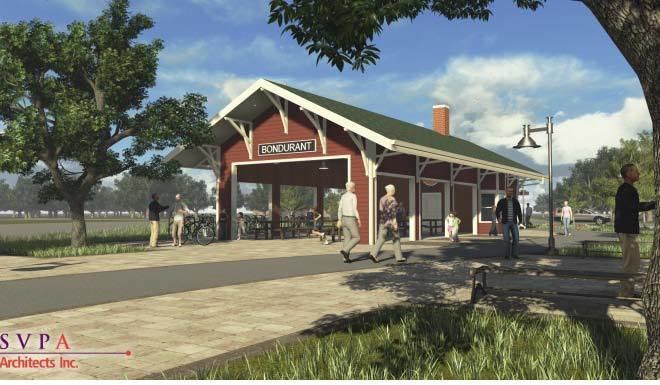County Polk FIPS code 19-07390 Elevation 296 m Population 4,614 (2013) Area code 515 | Time zone Central (CST) (UTC-6) GNIS feature ID 0454745 Zip code 50035 Local time Monday 10:30 AM | |
 | ||
Weather 16°C, Wind S at 34 km/h, 75% Humidity Area 21.76 km² (21.7 km² Land / 5 ha Water) | ||
Bondurant is a city in Polk County, Iowa, United States. The population was 3,860 in the 2010 census, an increase of 109% from the 1,846 population in the 2000 census. It is part of the Des Moines–West Des Moines Metropolitan Statistical Area.
Contents
Map of Bondurant, IA 50035, USA
History
Bondurant was founded in 1884. In 1892, the Chicago Great Western Railway built the Bondurant railway station. Bondurant incorporated as a city on December 23, 1897. The city was named for Alexander C. Bondurant, who was the area's first settler in 1857.
Geography
Bondurant is located at 41°41′39″N 93°27′41″W (41.694304, -93.461488).
According to the United States Census Bureau, the city has a total area of 8.40 square miles (21.76 km2), of which, 8.38 square miles (21.70 km2) is land and 0.02 square miles (0.05 km2) is water.
Bondurant is located in the heartland of Iowa, and can be directly accessed by U.S. Route 65 (from the northeast or southwest) or NE 78th Ave (from the west).
2010 census
The 2010 census recorded a population of 3,860 in the city, with a population density of 804/sq mi (310/km2). There were 1,422 housing units, of which 1,362 were occupied.
Of the 1,362 households 1,021 (75%) were families, with 641 families having children under the age of 18. The age population was spread out with 1279 (33.1%) under the age of 18, 2339 (60.6%) from 18 to 65, and 242 (6.3%) who were 65 years of age or older. The median age was 29.7 years with the male population being 1,931 (50%) and the female population 1,929 (50%).
The racial makeup of the city in the 2010 census was 96.5% White American, 0.6% African American, 0.1% Native Americans in the United States, 0.8% Asian American, 0.0% Native Hawaiians or Pacific Islander American, 0.4% other races and 1.6% were from two or more races. Of those 1.7% were Hispanic and Latino Americans.
2000 census
As of the census of 2000, there were 1,846 people, 659 households, and 508 families residing in the city. The population density was 385.9 people per square mile (149.1/km2). There were 682 housing units at an average density of 142.6/sq mi (55.1/km2). The racial makeup of the city was 98.43% White, 0.22% Native American, 0.16% Asian, 0.33% from other races, and 0.87% from two or more races. Hispanic or Latino of any race were 0.87% of the population.
There were 659 households out of which 46.9% had children under the age of 18 living with them, 61.9% were married couples living together, 12.1% had a female householder with no husband present, and 22.9% were non-families. 19.9% of all households were made up of individuals and 6.5% had someone living alone who was 65 years of age or older. The average household size was 2.80 and the average family size was 3.24.
In the city, the population was spread out with 33.1% under the age of 18, 6.4% from 18 to 24, 34.9% from 25 to 44, 19.2% from 45 to 64, and 6.3% who were 65 years of age or older. The median age was 32 years. For every 100 females there were 98.1 males. For every 100 females age 18 and over, there were 91.5 males
The median income for a household in the city was $52,877, and the median income for a family was $56,989. Males had a median income of $35,000 versus $26,309 for females. The per capita income for the city was $19,196. About 3.1% of families and 5.7% of the population were below the poverty line, including 6.3% of those under age 18 and 7.7% of those age 65 or over.
